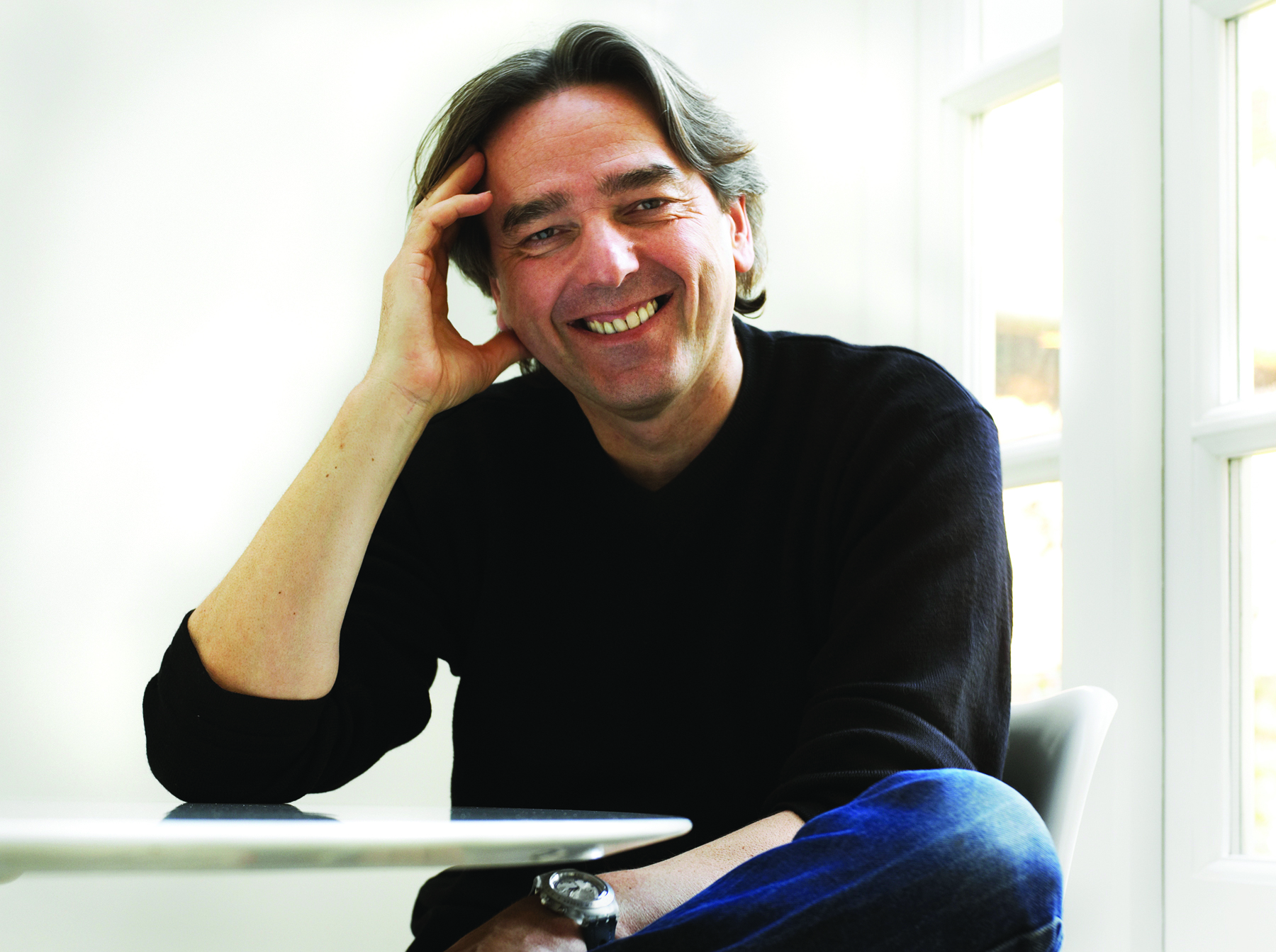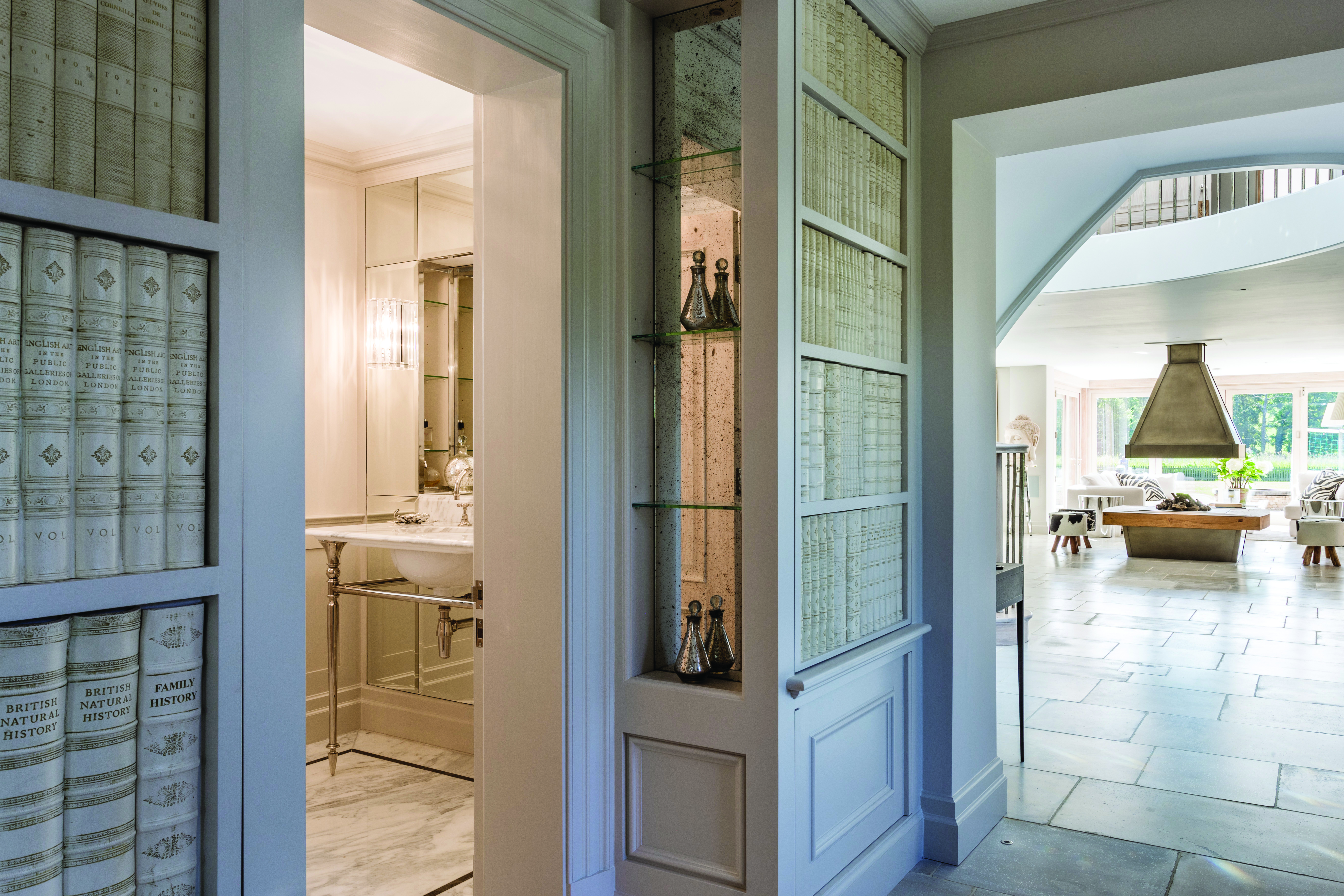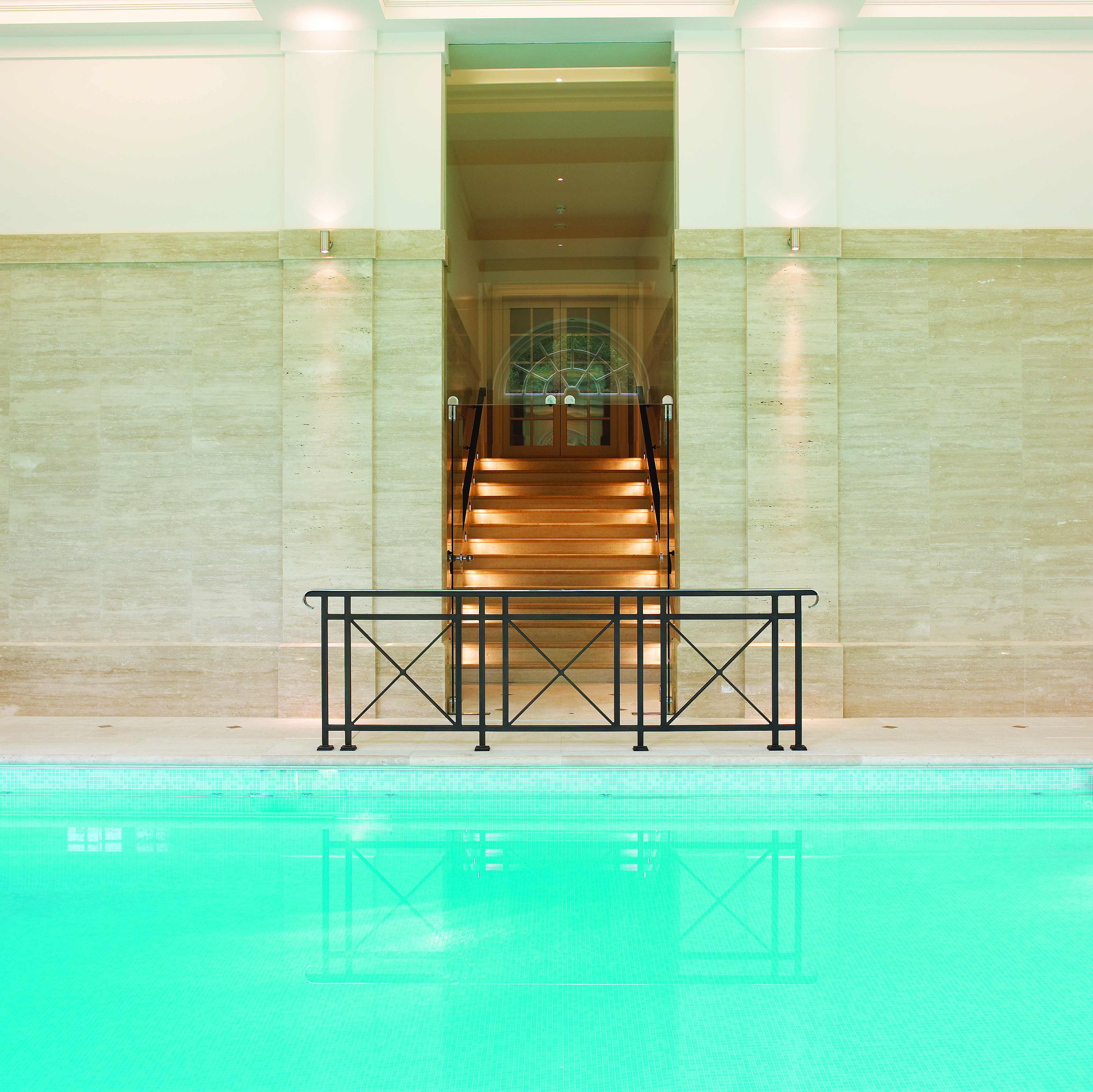Jade Tilley talks to John Evans about design in the West Midlands, seeking perfection in balance and structure and the curse of the generic portfolio.

John Evans is the Founder and Creative Director of John Evans Interior Architecture & Design Ltd and je+1.
With 30 years experience in the industry, John is a Fellow of the Royal Society for the Arts, a Member of the Chartered Society of Designers and an active member of the British Institute of Interior Design (BIID). John has been creating meticulously designed interiors for his entire career. Having started his working life at his parents ironmongery business, working his way into a retail design store and from there moving on to create the retail interiors for what is now known as DFS, Johnís career has been varied to say the least.

What is your earliest memory of design having an impact on you?
I canít remember a time when I wasnít impacted by design and art. My first love was for art and technical drawing, they were the only things I was good at during my school years.
I developed a love of modern art, which has stayed with me. What modern art gives you is a sense of form and balance; it has to balance, which is what I love in design and what I bring to my work. I used to try and produce art to sell but I realised that I wasnít good enough to be the artist I really wanted to be.
At a much younger age, I didnít even know what an interior designer was, but once I had learned about it, everything kicked off from there. With drawing, you often begin with photo realistic drawings and then it develops and distills down into something much more simple and yet meaningful. Picasso did this with his work; he managed to distill it down to a few simple lines, and I think this is how much of our work begins, you refine and refine until it works.

Where did you study design and what did you specialise in?
I didnít study design at all. I read some of the other profiles that have come before mine and realised that Iím not alone, there isnít always one obvious route to design; it comes from everywhere.
University wasnít an option for me in my youth, I needed to earn money. I left school at 16 and went to work for my parents in their ironmongery business. Although I would have liked to have gone to uni, I think the route I took has formed the person I am now. I learned so much about structure from my parents and their business, intertwined in the building industry.
At 23 I opened my own interior design shop. I was hungry to know more about design and somewhat arrogantly decided to open my own store, which offered a design service as well as all products within that service. My wife and I used to travel down to London to see the most cutting-edge designs of the time, such as Osborne and Little, and bring it back to the midlands. We also had specialist decorators on our books, who would hang the pieces we brought back for clients. We became bigger than I ever thought it would and we had that business for 10 years. It was quite a difficult thing to do at the time; the Midlands was quite far behind London, so introducing design from London to the area always had its difficulties.
I realised a little further down the line that I was a terrible shop owner because I couldnít bring myself to sell anything I didnít personally love. I would create room-sets, which I would sell as a package but I cold never talk a client into something I didnít believe in. I realised I needed to sell my service instead of products. I had previously employed an interior designer to work for me while in the store but I became frustrated with that set up, always wanting to do better myself (probably the arrogance of youth) so I began to teach myself, reading books and starting to design things like exhibition stands; it all moved on from there.
Who is your client base in the Midlands?
When in the shop, our clients were from the Birmingham area. Birmingham is a strange place. I sometimes feel that, had I gone somewhere else, it would have been easier for me, in terms of the work available. Fortunately for me, I have met people who have given me work, although oddly, not from the Midlands. Years ago, I was asked to design a furniture store, this brand turned into DFS years down the line and we still work with them now on their retail stores. This falls within a specific service within our design business (je + 1), which is UK wide. Our residential studio picks up on a vast array of clients because we are literally in the middle of the country. We have a great deal of work in the Cotswolds and work on a lot of swimming pools, playing to our strengths in structure and form.

How has design education changed since you studied?
As an employer, I feel that most difficult thing is the generalised portfolio that does not show any personality. Are students now taught to make their work so mainstream that there is no character in it? I like to see process, not just the final glossy result. Show me the triumphs and the pitfalls and how the designer has worked around problems to create new solutions. Portfolios should be somewhat of a character study as well as a presentation of skill and a design eye.
What are the key characteristics you look for when bringing new talent into your studio?
Enthusiasm is the biggest thing; do they want to do the job? People can often drift into the media and art sectors of education, so itís important to distill what design means to them. I ask similar questions to those youíre asking me. Who are your inspirations? Why do you want to be a designer? We can teach everything else on the job, but we cannot teach them to want to do it. I look for potential candidates who are engaged and interested.

What kind of designer did you aspire to be and who are your inspirations?
I never wanted to be a Birmingham designer specifically, I wanted to be the best, regardless of location and background. Iím still trying to achieve this now, I think itís all part of your life long process as a designer. We aim to produce quality and that is what drives me everyday. Back in the days of Robert Adamsí designs, he used to design it all Ė Thatís me, I want to do it all Ė balanced perfection. Iím yet to achieved it but then perfection is an elusive beast and I like an element of control, so I guess Iíll always be searching. My inspirations include Christian Liaigre, who completely and utterly convinces people with his designs, they are compelling and close to perfection; Jean-Michel Frank, who is still so relevant today; and Philippe Starck, who is so innovative and boundary-pushing.
How would you define your design style?
Contemporary classic I would like to think. I canít bare things that date badly. We should always be able to reflect on our work from 10, 20 years ago and still be happy with it. Timelessness like that drives me.
What was your first professional design commission?
I designed a house for my sisterís friend as one of my first projects, and of course the 20,000 sq ft furniture store for the future DFS Ė that was very daunting but 36 years later we are still designing for the same client. What has been your biggest design commission to date? One of our biggest jobs is our current project. Itís a charity who were building a university complex style in Essex over 82 acres. The build includes residential blocks, office buildings, a 500-seat auditorium and medical centre. We were asked to design the project over four years ago and itsí still ongoing with our involvement. Residentially, we are working on a really interesting extension project on a listed building. It began with a conservatory project and has grown to include us building down by two storeys. We have worked closely with the architect Digby Harris.

Where is the majority of your work based and what sector would you say the studio has become known for?
Some years ago, I realised that the areas we worked in didnít really marry up, so I decided to separate the business out to distinguish and specialise more clearly in each area. We now define ourselves by John Evans Interior Architecture + Design Ltd and je+1, allowing us to focus on residential design and retail work separately.
How has travel helped to shape and influence your ideas on design?
Travel certainly does broaden the mind. I have a house in France, hence my inspirations in the earlier question. I love France, the light is different, it is just fantastic. I also love Morocco; the colours the smells and the sights and really captivating and it inspires me in a different way. Equally, London has and continues to be a massive influence on me. We have a small office there to house us when weíre in the city for work and we (my wife and I) are huge London fans. It is one of the best cities in the world and is at the cutting-edge of design.

How have clientsí expectations of designers changed in recent years?
This may well just be the clients that we have worked with but we have found that the home has become much more of a machine for living in. Rooms and requests that are becoming more Ďstandardí in the home include, spas, cinemas, pools and gyms. We are designing spaces that people never have to leave. One such project we have worked on over the last two years has all these elements and more. It has a 14-car garage for the clientís collection, a cinema, steam room and gym facilities. It is complete to the extent that you can live there without ever needing anything else.
If you hadnít become an interior designer what would you be doing?
I do have an interest in fashion, and my son works in the industry, so perhaps a retail store in the fashion industry might have been on the cards. It would be wonderful to be a modern artist, living in the South of FranceÖ maybe, one dayÖ







